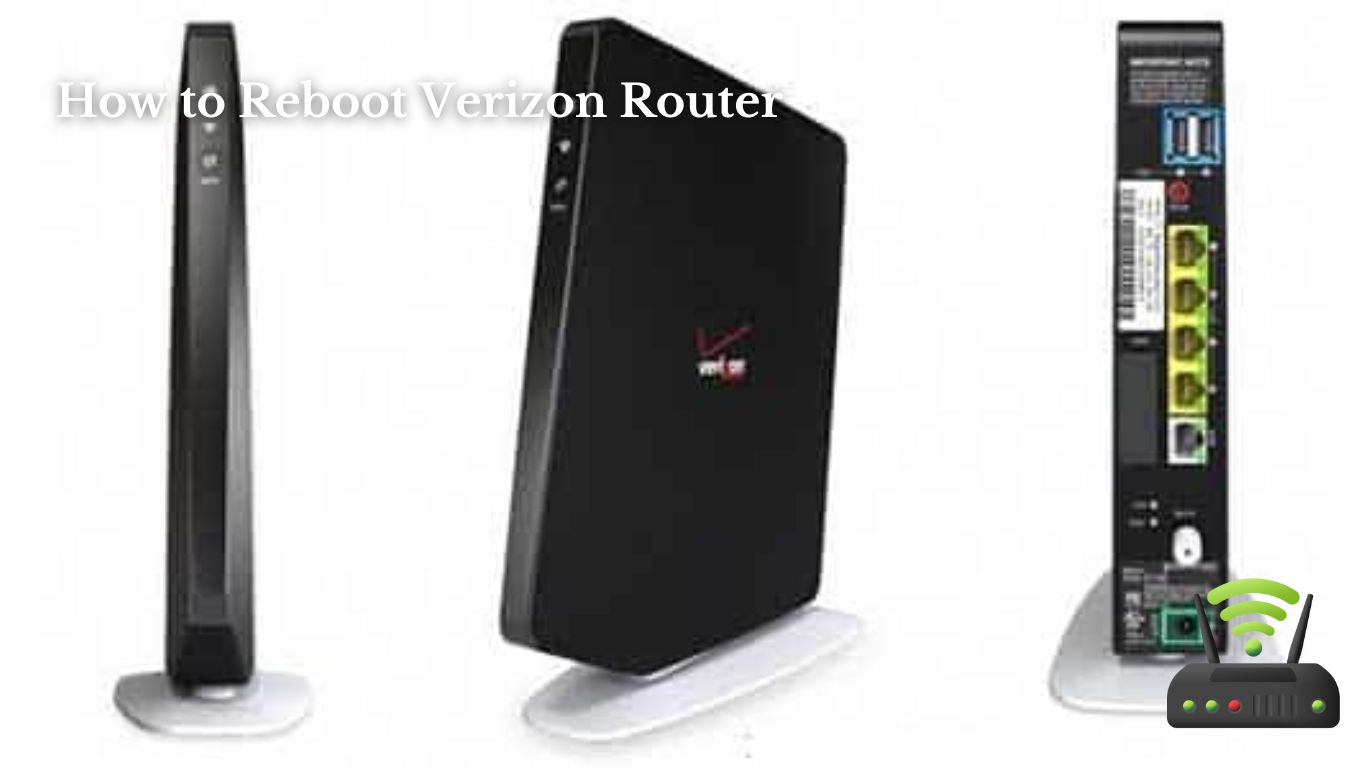
How to Reboot Verizon Router
Hey there!
Ever had trouble with your Verizon router? I’ve got just the solution for you. In this article, I’ll guide you through the easy and essential process of rebooting your Verizon router.
We’ll dive into why it’s important, the benefits it brings, and even some common issues that can be fixed with a simple reboot.
Plus, I’ll share different methods, frequency recommendations, and some handy tips and tricks for a successful reboot.
Let’s get started!
Why Rebooting Your Verizon Router Is Important
Rebooting your Verizon router is important because it can help resolve network connectivity issues. As someone who relies heavily on a stable internet connection for work and leisure, I understand the frustration that comes with experiencing network problems. That’s why I always make it a point to reboot my Verizon router whenever I encounter connectivity issues.
When you reboot your router, you essentially power it off and then turn it back on after a brief period. This simple act can often do wonders in resolving network-related problems. Sometimes, routers can become overwhelmed with data or encounter temporary glitches that can disrupt the connection. By rebooting the router, you give it a fresh start, allowing it to clear any temporary issues and reconnect to the network more effectively.
In my experience, rebooting the Verizon router has proven to be an effective solution in various situations. Whether it’s slow internet speeds, intermittent connection drops, or difficulty connecting to certain devices, a reboot often does the trick. It’s like giving your router a moment to catch its breath and reset itself, resulting in improved network performance.

Step-by-Step Guide to Rebooting Your Verizon Router
When it comes to rebooting my Verizon router, I often wonder how frequently it is necessary to do so.
Additionally, I am curious about the difference between rebooting and resetting the router, as they seem to achieve similar outcomes.
Furthermore, I am interested in learning about the troubleshooting steps I should take after rebooting my router to ensure optimal performance.
Necessary Reboot Frequency?
To ensure optimal performance, you should regularly restart your Verizon router. While there is no specific frequency recommended by Verizon, I find that rebooting my router once every few weeks helps to keep everything running smoothly.
Over time, the router’s memory can become overloaded with temporary files and processes, which can slow down its performance. By restarting the router, these temporary files are cleared out, allowing the router to start fresh and run more efficiently.
Additionally, a regular restart can help resolve any minor issues or glitches that may have occurred since the last reboot. It’s a simple step that only takes a few minutes, but it can make a big difference in the overall performance of your Verizon router.
Rebooting Vs. Resetting?
Resetting your Verizon router is a more drastic step compared to simply rebooting it. While rebooting your router involves turning it off and on again to clear any temporary issues, resetting your router restores it to its factory settings, erasing all customized configurations. This can be useful when you’re experiencing persistent problems or need to start fresh with your router. However, it’s important to note that resetting your router will also disconnect all devices connected to it, requiring you to set up the network again from scratch. Here’s a comparison of rebooting and resetting your Verizon router:
| Rebooting | Resetting |
|---|---|
| Clears temporary issues | Restores to factory settings |
| Keeps customized configurations | Erases all configurations |
| Maintains connection to devices | Disconnects all devices |
| Quick and simple process | Time-consuming setup required |
In most cases, rebooting your router should suffice, but if you’re facing persistent problems, resetting your router might be necessary.
Troubleshooting After Reboot?
After a reboot, troubleshooting your device’s internet connection can help identify and resolve any remaining issues. I find this step to be crucial in ensuring a smooth and uninterrupted internet experience.
When I encounter internet connectivity problems after rebooting my device, I start by checking the physical connections. I make sure that all cables are securely plugged in and that there are no loose connections.
Next, I restart my modem and router to refresh their settings. If the problem persists, I move on to checking the network settings on my device. I ensure that Wi-Fi is enabled and that I am connected to the correct network.
Understanding the Benefits of Rebooting Your Verizon Router
Rebooting your Verizon router can help improve its performance and resolve connectivity issues. It’s a simple solution that can make a big difference in your internet experience.
Here are a few benefits of rebooting your router:
- Improved Speed: Over time, routers can become overwhelmed with the data they process. Rebooting clears out any temporary files and resets the router, allowing it to operate more efficiently. This can lead to faster internet speeds and smoother browsing.
- Stability: If you’re experiencing frequent disconnections or intermittent signal drops, a reboot can help stabilize your connection. By restarting the router, you’re giving it a chance to refresh its settings and establish a more stable connection with your devices.
- Resolve Connectivity Issues: Sometimes, routers can encounter issues that prevent them from connecting to the internet or communicating with devices. Rebooting can help resolve these problems by resetting the router’s software and restoring its default settings.
Common Issues That Can Be Resolved by Rebooting Your Verizon Router
I’ve had my fair share of frustrations with my Verizon router, especially when it comes to connection problems.
However, I’ve found that rebooting the router can often resolve these issues quickly and efficiently.
Additionally, I’ve noticed that rebooting the router can also improve the speed and performance, making my internet experience much smoother overall.
Connection Problems Resolved
To ensure your connection problems are resolved, try power cycling your Verizon router. It may seem like a simple solution, but it can work wonders. Trust me, I’ve been there.
Here are a few reasons why power cycling your router can be effective:
- Resetting the router clears out any temporary glitches or software bugs that may be affecting your connection.
- It refreshes the router’s memory and clears any excess data that may be clogging up the system.
- Power cycling also gives your router a chance to reconnect to the network and establish a fresh connection.
- It can help resolve conflicts between the router and other devices connected to it.
- Finally, power cycling is a quick and easy troubleshooting step that can save you time and frustration.
Speed Issues Resolved
If you’re experiencing slow internet speeds, power cycling your router can help resolve the issue. It’s a simple process that can be done in a few steps. First, locate your router and unplug it from the power source. Wait for about 30 seconds before plugging it back in. This will allow the router to reset and refresh its connection. Once it’s powered back on, give it a few minutes to fully restart. In the meantime, you can check out this table to see the benefits of power cycling your router:
| Benefits of Power Cycling Your Router | ||
|---|---|---|
| Faster internet speeds | Improved connectivity | Enhanced online gaming |
| Smoother streaming | Eliminates lag | Better browsing |
The Different Methods to Reboot Your Verizon Router
There are several ways you can reboot your Verizon router.
One method is to simply unplug the power cord from the back of the router, wait for about 10 seconds, and then plug it back in. This will initiate a reboot and can often resolve any minor connectivity issues.
Another way to reboot your Verizon router is through the router’s administrative interface. You can access this interface by typing the router’s IP address into your web browser. Once you are logged in, you can navigate to the settings or maintenance section and find the option to reboot the router.
Some Verizon routers also have a physical reset button on the back or bottom of the device. Pressing and holding this button for about 10 seconds will perform a hard reset, which can be useful if you are experiencing persistent network issues.
Regardless of the method you choose, rebooting your Verizon router can often help improve your internet connection and resolve any temporary glitches.

How Frequently Should You Reboot Your Verizon Router?
Frequently rebooting your Verizon router can help improve its performance and prevent connectivity issues. As a Verizon user, I have found that rebooting my router at regular intervals has made a significant difference in my internet experience. Here are three reasons why I believe frequent reboots are necessary:
- Clearing Cache: Rebooting your router clears the cache and temporary files that may be slowing down your internet speed. This can help improve overall performance and ensure a smoother browsing experience.
- Updating Firmware: Rebooting your router allows it to install any pending firmware updates. These updates often contain bug fixes and security enhancements, ensuring that your router is running on the latest software version.
- Refreshing Connections: Over time, your router may develop connection issues due to prolonged usage. Rebooting it helps refresh the connections and establish a fresh connection with your devices, reducing the chances of connectivity problems.
By rebooting my Verizon router regularly, I have noticed a significant improvement in my internet speed and stability. I make it a point to reboot my router once every couple of weeks to ensure optimal performance.
Give it a try and see the difference it can make in your Verizon internet experience!
Tips and Tricks for a Successful Reboot of Your Verizon Router
To successfully improve your internet experience with Verizon, it’s important to follow these tips and tricks when rebooting your router.
First, make sure to locate the power button on your Verizon router. It is usually located at the back of the device. Press and hold the power button for about 10 seconds until the lights on the router start blinking. This will initiate a complete reboot of the router.
Next, it’s important to unplug the power cord from the router and wait for at least 30 seconds before plugging it back in. This will ensure that the router fully powers down before restarting. Once you’ve plugged the power cord back in, wait for the lights on the router to stabilize and become solid. This indicates that the router has successfully rebooted and is ready for use.
Troubleshooting Tips for Rebooting Your Verizon Router
If you’re experiencing issues with your internet connection, try following these troubleshooting tips for successfully restarting your Verizon router.
First, unplug the power cord from the back of the router and wait for about 10 seconds. This will ensure that any temporary glitches are resolved.
Next, plug the power cord back in and wait for the router to fully power on. It may take a few minutes for all the lights to come back on, so be patient.
Once the router is fully powered on, check if your internet connection has been restored. If not, you can try resetting the router to its factory settings.
To do this, locate the reset button, usually a small hole at the back of the router. Use a paperclip or a pin to press and hold the reset button for about 10 seconds. This will erase any customized settings and restore the router to its default configuration.
After resetting, wait for the router to reboot and then try connecting to the internet again.
If these troubleshooting tips don’t work, it may be time to contact Verizon for further assistance.
Frequently Asked Questions
Can I Reboot My Verizon Router Remotely?
I can reboot my Verizon router remotely by accessing the router’s settings through the Verizon website or mobile app. This allows me to restart the router without physically being at home.
Will Rebooting My Verizon Router Delete All of My Saved Settings?
Rebooting my Verizon router will not delete all of my saved settings. It simply restarts the device, which can help resolve connectivity issues or improve performance.
How Long Does It Typically Take for a Verizon Router to Reboot?
Typically, it doesn’t take long for a Verizon router to reboot. The duration can vary, but it usually only takes a few minutes for the router to fully restart and be ready for use again.
Is It Necessary to Unplug the Router From the Power Source Before Rebooting?
No, it is not necessary to unplug the router from the power source before rebooting. Rebooting can be done by simply pressing the reset button on the router or through the router’s admin settings.
Can Rebooting My Verizon Router Improve Internet Speeds?
Rebooting my Verizon router can definitely improve internet speeds. I’ve experienced faster connections and better overall performance after a reboot. It’s a simple and effective way to optimize my network.
Conclusion
In conclusion, rebooting your Verizon router is a simple yet effective solution to many common issues. By following the step-by-step guide and understanding the benefits, you can easily resolve connectivity problems and enhance your internet experience.
Remember to reboot your router regularly to ensure optimal performance. With these tips and tricks, troubleshooting any rebooting issues will be a breeze.
So, don’t hesitate to give your Verizon router a reboot and enjoy uninterrupted internet connectivity.